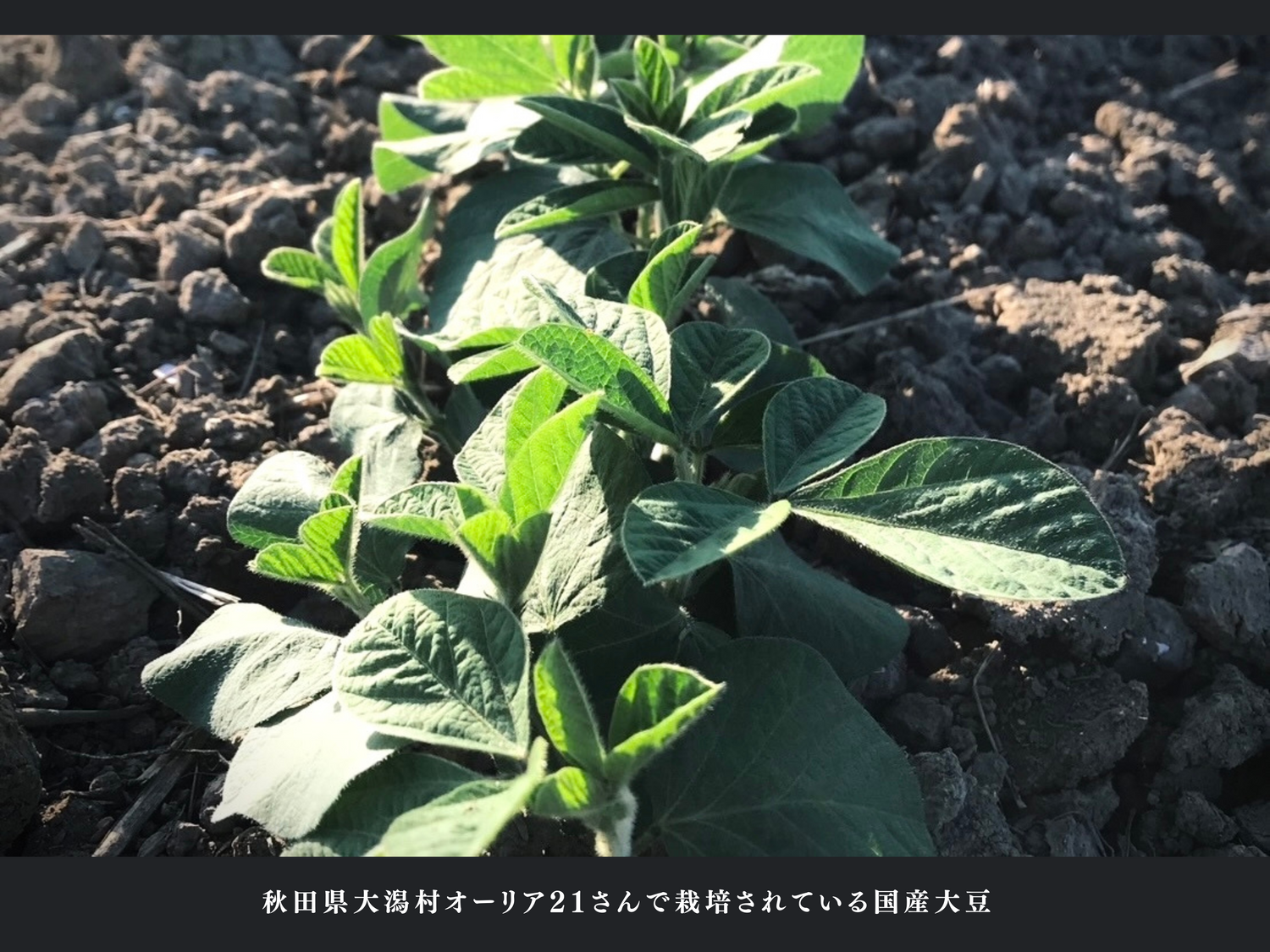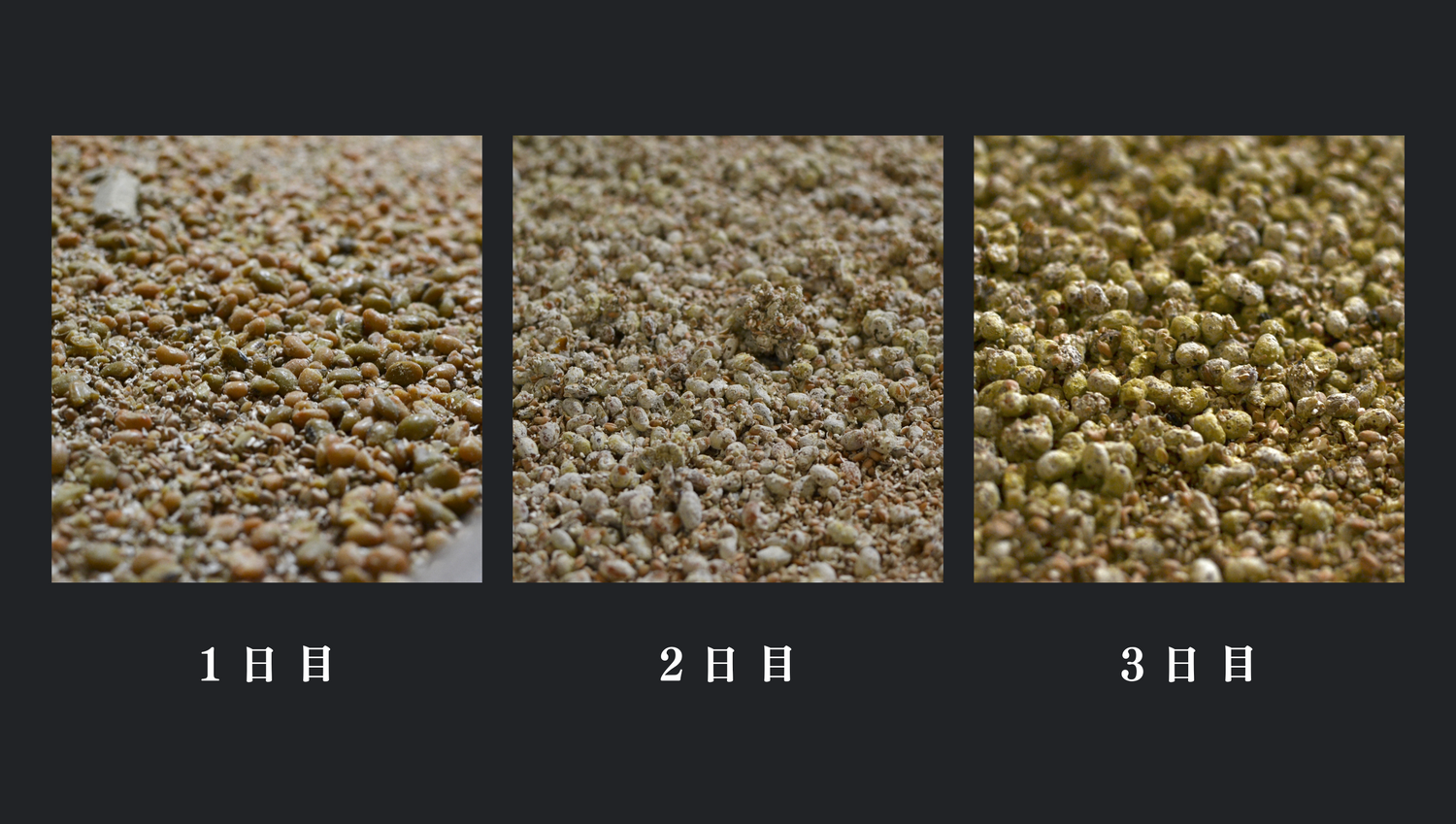明治三十年から続く杉樽仕込み
天然醸造・国産原料・無添加に
こだわり続けた「ほんまもん」の味
杉樽仕込みによる天然醸造の醤油づくりは想像以上に手間がかかり、大量生産もできません。
それでも、正直に、誠実に、時間をかけて
育て上げてきました。
他にはない風味と優しさが宿っています。
01 杉樽仕込み

微生物を生かす環境
今にも崩れそうなほど古びた杉樽。しかし腐っているわけではなく、その中には大切な菌たちが共存しています。
味噌や醤油といった発酵調味料は、乳酸菌や酵母菌などの微生物の力で作られています。微生物たちが快適に過ごせる環境を整えることで、最高の味わいを引き出せるのです。
杉樽での醤油造りは手間も時間もかかりますが、
私たちはこの先も杉樽仕込みにこだわり続けます。
02 国産原料・無添加

美味しさの原点
私たちがものづくりで大事にしていることは何といっても「素材」です。
シンプルだからこそ素材選びを大事にしています。
原料は直接生産者さんの元へ足を運びどのように栽培されているのか
自分たちの目で見て、厳選した国産品を使用しています。
高い品質を誇る秋田県産の無農薬大豆、徳島の自然に育まれた土地で質の高い品質を誇る徳島県産の小麦、美しい鳴門海峡の海から取れた世界トップの品質を誇る徳島県産の鳴門塩。
特に国産大豆の割合は全体の6%とごくわずかで、国産大豆と輸入大豆を混ぜて使用している所は少なくありません。しかし私たちは、秋田県の農家と契約栽培を結び100%国産大豆で商品を作っています。
これらこだわりの素材を使い、すべての工程に愛情を注ぎながら、手間暇を惜しまず仕込んでいます。
お醤油と麹
味の決め手となる麹(こうじ)を手づくりしています。
炒って挽き割った小麦と蒸した大豆と麹菌とを混ぜ合わせ、室(むろ)と呼ばれる部屋に移し、
1日寝かします。
その間、手でしっかりと混ぜながら最適な温度に保つことで生命力を吹き込み、力のある麹に仕上げます。
03 天然醸造

自然発酵の力
醤油の醸造方法は時代と共に変化し、発酵技術の機械化が進んでいます。
しかし、濱醤油では創業以来100年以上、機械化に執着せず、蔵に棲みつく微生物の力を借りて、長期間発酵・熟成させる昔ながらの製法を守り続けています。
杉樽の中で子育てをするように、手間と時間を
かけてじっくりと熟成させた醤油は、奥深い味わいと豊かな香りを持つ、 他にはない醤油となっています。




















